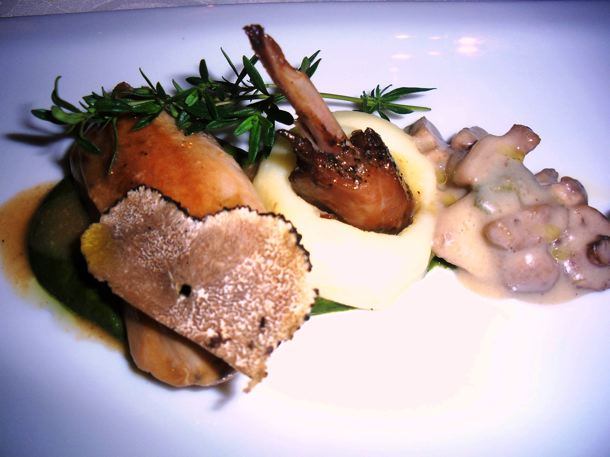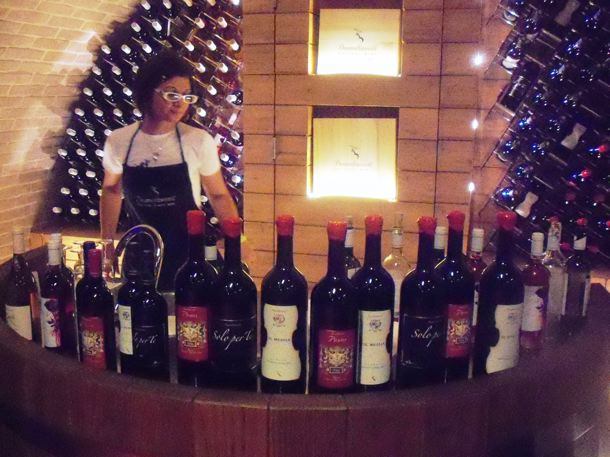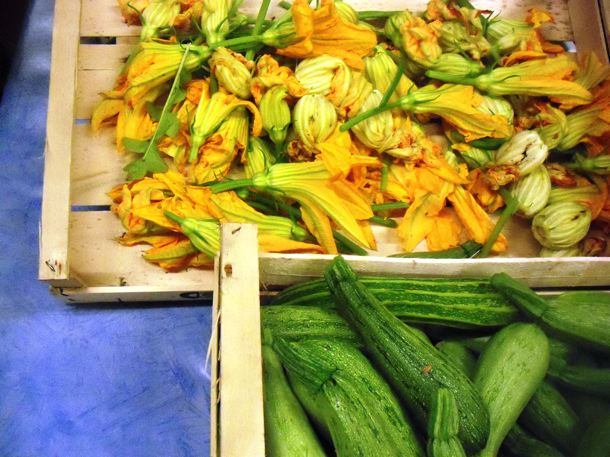Travel News
Food & Wine of Italy’s Adriatic Coast: Exploring Marche, Pt. 2
Mozzarella cheese is a typical Italian appetizer, shown here at Marche Locanda Ca’ Andreana restaurant. Photo credit: Bob Cooper
Tuscany is renowned for its food and wine, but the culinary traditions of the Marche region just next door have yet to be discovered by international tourists.
While naturally delicious, the Marche region focuses on nutritious local foods that just might hold the key to a long life—Europe’s oldest woman is a Marche resident.
In part two of his series (read part one on art and culture here), Bob Cooper reports on this Italian region’s food and wine traditions.
A central Adriatic location and mild climate has made Marche one of Italy’s most productive regions for agriculture, viticulture, ranching and fishing. The locavore movement—fresh, local and sustainable—is how it’s always been done there.
Sampling the cuisine needn’t involve white tablecloths. Case in point: I stopped at a Shell station mini-mart and gasped. Inside were hundreds of freshly made ciabatta sandwiches, an espresso bar, packages of gourmet pasta and fine wines.

Truffles are found in dishes at Marche’s finer restaurants, like this entrée with rock partridge, mushrooms and mashed potatoes. Photo credit: Bob Cooper
Italians take their food and wine seriously. You can spend a small fortune on truffles, sniffed out by dogs in the subsoil of Marche forests in the summer and fall, at the top restaurants.
Or you can stick to pizza—sold at family-friendly prices just like in the U.S., though it’s tastier. But it’s best to try it all.
Marche has a 110-mile coastline, so any observations about the cuisine must start with seafood. The most fish arrive on shore in the Marche’s southernmost coastal town, San Benedetto del Tronto, as it’s Italy’s second-busiest fishing port.
Nicknamed “Little Miami,” the town has a long beach fringed by 7,000 palm trees, as well as affordable beach hotels and seafood restaurants. A fish market, historic fishing district and fishing museum add to the town’s nautical theme.
The most memorable seafood dining experience, however, is found up the coast in Portonova at Fortino Napoleonico. In case the name doesn’t give it away, this restaurant (and four-star hotel) is housed on two levels of an 1811 brick sea fort built on Napoleon’s orders. The cannons are still there—scattered around among several indoor and outdoor dining areas.

There are plenty of choices at the Domodimonti winery’s tasting bar. Photo credit: Bob Cooper
On a typical night, the menu might offer Marche specialties using local mussels, clams, scampi, swordfish and weevers (a Mediterranean fish). Jazz, rock and accordion music were all performed in different corners of the sprawling restaurant the night I visited.
Head into the inland hills and you’re sure to notice wineries and tasting rooms, none more exhilarating than Domodimonti Natural Wines. They are “natural” in that most of the standards of organic viticulture are exceeded, with the use of hand-picked grapes, no acid adjustments, no added sugar and rigorous conservation practices..
Just as intoxicating are views of the vineyards from the winery’s terrace and the formal restaurant above it, which cling to a steep hillside.

Zucchinis and zucchini flowers, like these in the kitchen at Symposium restaurant, are a common ingredient in Marche dishes. Photo credit: Bob Cooper
Wineries are popular throughout Italy for good reason, as Italians consume nearly 10 times more wine per person than Americans.
Like Domodimonti, the Michelin-star Symposium restaurant also doubles as a small inn, but this gem is hidden not in the hills, but in deep woods on a winding country road. Tall windows look out onto flower gardens. Waiters navigate the three-room, 25,000-bottle cellar for a meal’s wine pairing.
As is customary in Marche, risotto is served first and salad is nearly last, just before dessert. Symposium has live music that is occasionally overshadowed by the festive crowd. Two opera singers sang arias the night I visited, while a large group in the adjacent dining room belted out Italian songs in less polished (but equally spirited) voices.
Another Marche restaurant/inn at the end of a long and winding road, Locanda Ca’ Andreana (near Urbino), is very different, but the food is just as good. All of it is organic and most comes from the surrounding fields or within a few miles.

Locanda Ca’ Andreana restaurant is housed in a replica of a 16th-century farmhouse. Photo credit: Bob Cooper
Specialties include fried zucchini flowers, spinach cubes, handmade ravioli, free-range rabbit, and cheeses aged in straw. The building is a replica of a 16th-century country restaurant that once occupied the site.
A similar experience is found in central Marche at Il Casino del Marchese, which draws most of its menu ingredients from an 80-year-old sustainable family farm and cheese factory down the hill. It’s received awards for its all-natural buffalo cheeses and yogurts (water buffaloes are part of the 300-animal herd tended at the farm) and nothing you eat was made more than 48 hours ago.
The restaurant is housed in a 14th-century, arched-ceiling farmhouse, where cows once slept downstairs to generate heat to the bedrooms above—a medieval version of sustainable energy.
Whether the food, wine and culinary traditions of Marche have a direct effect on its boasting the longest life expectancy in Europe is hard to say. Europe’s oldest woman—a 112-year-old whose 104-year-old sister cooks for her—lives in a Marche village. But the long tradition of fresh, organic foods and wines with meals cannot hurt.
So, besides adding richness to your life, a culinary visit to Marche might just add length as well.
Text and photos by Bob Cooper for PeterGreenberg.com. Bob Cooper (www.bob-cooper.com) has written for Continental, Away.com and many other travel magazines and websites.
Related links on PeterGreenberg.com:












